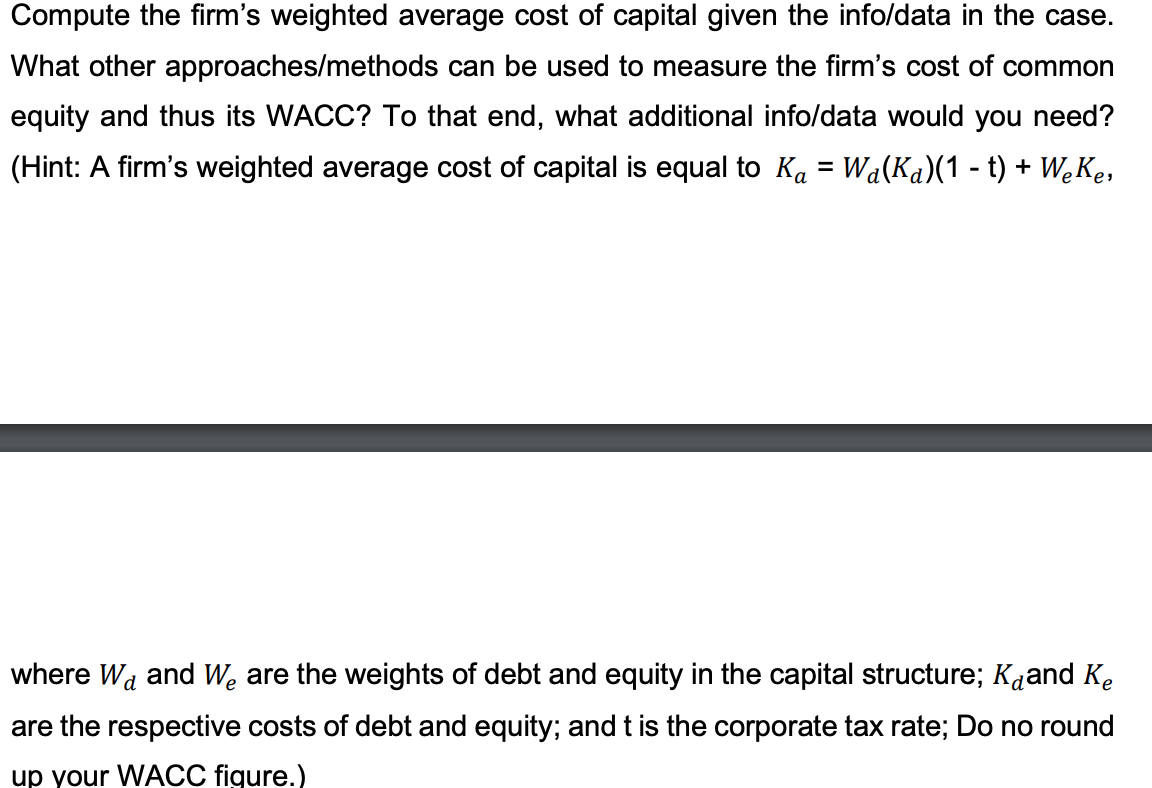Answered step by step
Verified Expert Solution
Question
1 Approved Answer
Please show calculations to help me understand the steps! The equipment has a delivered cost of $112,000. An additional $4,000 is required to install and




Please show calculations to help me understand the steps!
The equipment has a delivered cost of $112,000. An additional $4,000 is required to install and test the new system. The new pumping system is classified by the IRS as 5-year property, although it has an 8-year estimated service life. For assets classified by the IRS as 5-year property, the Modified Accelerated Cost Recovery System (MACRS) permits the company to depreciate the asset over 6 years at the following rates: Year 1 = 20 percent, Year 2 = 32 percent, Year 3 = 19 percent, Year 4 = 12 percent, Year 5 = 11 percent, Year 6 = 6 percent. At the end of 8 years, the salvage value is expected to be around 5 percent of the original purchase price, so the best estimate of salvage value at the end of the equipment's service life is $5,600, with removal costs of $1,300. The existing pumping system was purchased at $45,000 eight years ago and has been depreciated on a straight-line basis over its economic life of 10 years. If the existing system is removed from the well and crated for pickup, it can be sold for $3,500 before tax. It will cost $1,000 to remove the system and crate it. At the time of replacement, the firm will need to increase its net working capital requirements by $4,200 to support inventories. The new pumping system offers lower maintenance costs and frees personnel who would otherwise have to monitor the system. In addition, it reduces product wastage because of a higher cooling efficiency. In total, it is estimated that the yearly savings will amount to $28,000 if the new pumping system is used. FPC's assets are financed by debt and common equity and has a target debt ratio of 25 percent. Its debt carries an interest rate of 6 percent. The firm has paid $2.00 of dividend per share this year (Do) and expects a constant dividend growth rate of 4 percent per year in the coming years. The firm's current stock price, Po, is $26.00. The firm uses its overall weighted average cost of capital in evaluating average risk projects, and the replacement project is perceived to be of average risk. The firm's federal-plus-state tax rate is 30 percent, and this rate is projected to remain fairly constant into the future. Compute the firm's weighted average cost of capital given the info/data in the case. What other approaches/methods can be used to measure the firm's cost of common equity and thus its WACC? To that end, what additional info/data would you need? (Hint: A firm's weighted average cost of capital is equal to Ka = Wa(Ka)(1 - t) + WeKe, where Wa and We are the weights of debt and equity in the capital structure; K and Ke are the respective costs of debt and equity; and t is the corporate tax rate; Do no round up your WACC figure.) Based on the capital budgeting schedule, evaluate the replacement project by computing NPV, IRR, MIRR, and Payback Period. Would you recommend to accept or reject the replacement project based solely on your DCF analysis so far? The equipment has a delivered cost of $112,000. An additional $4,000 is required to install and test the new system. The new pumping system is classified by the IRS as 5-year property, although it has an 8-year estimated service life. For assets classified by the IRS as 5-year property, the Modified Accelerated Cost Recovery System (MACRS) permits the company to depreciate the asset over 6 years at the following rates: Year 1 = 20 percent, Year 2 = 32 percent, Year 3 = 19 percent, Year 4 = 12 percent, Year 5 = 11 percent, Year 6 = 6 percent. At the end of 8 years, the salvage value is expected to be around 5 percent of the original purchase price, so the best estimate of salvage value at the end of the equipment's service life is $5,600, with removal costs of $1,300. The existing pumping system was purchased at $45,000 eight years ago and has been depreciated on a straight-line basis over its economic life of 10 years. If the existing system is removed from the well and crated for pickup, it can be sold for $3,500 before tax. It will cost $1,000 to remove the system and crate it. At the time of replacement, the firm will need to increase its net working capital requirements by $4,200 to support inventories. The new pumping system offers lower maintenance costs and frees personnel who would otherwise have to monitor the system. In addition, it reduces product wastage because of a higher cooling efficiency. In total, it is estimated that the yearly savings will amount to $28,000 if the new pumping system is used. FPC's assets are financed by debt and common equity and has a target debt ratio of 25 percent. Its debt carries an interest rate of 6 percent. The firm has paid $2.00 of dividend per share this year (Do) and expects a constant dividend growth rate of 4 percent per year in the coming years. The firm's current stock price, Po, is $26.00. The firm uses its overall weighted average cost of capital in evaluating average risk projects, and the replacement project is perceived to be of average risk. The firm's federal-plus-state tax rate is 30 percent, and this rate is projected to remain fairly constant into the future. Compute the firm's weighted average cost of capital given the info/data in the case. What other approaches/methods can be used to measure the firm's cost of common equity and thus its WACC? To that end, what additional info/data would you need? (Hint: A firm's weighted average cost of capital is equal to Ka = Wa(Ka)(1 - t) + WeKe, where Wa and We are the weights of debt and equity in the capital structure; K and Ke are the respective costs of debt and equity; and t is the corporate tax rate; Do no round up your WACC figure.) Based on the capital budgeting schedule, evaluate the replacement project by computing NPV, IRR, MIRR, and Payback Period. Would you recommend to accept or reject the replacement project based solely on your DCF analysis so farStep by Step Solution
There are 3 Steps involved in it
Step: 1

Get Instant Access to Expert-Tailored Solutions
See step-by-step solutions with expert insights and AI powered tools for academic success
Step: 2

Step: 3

Ace Your Homework with AI
Get the answers you need in no time with our AI-driven, step-by-step assistance
Get Started


